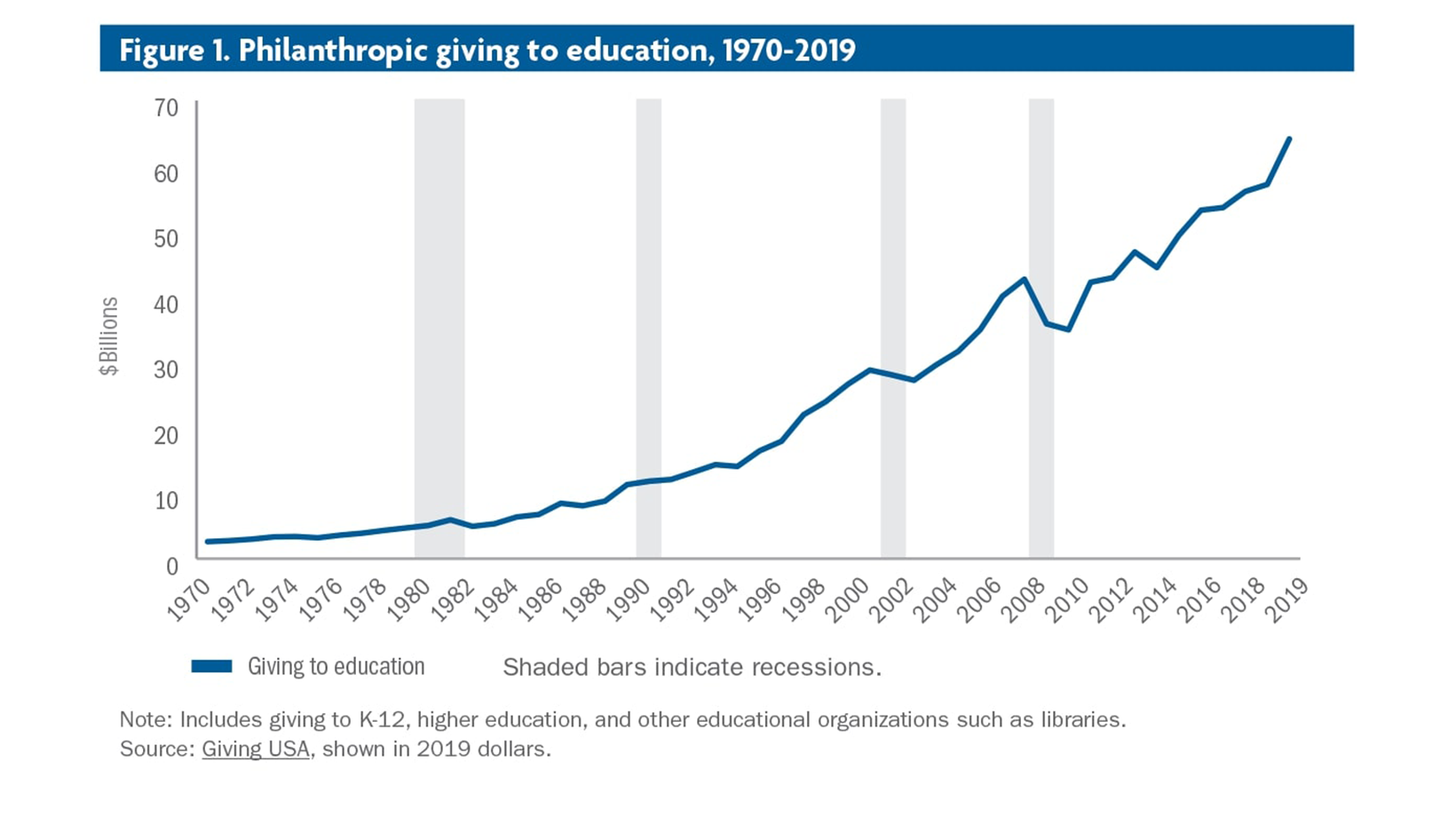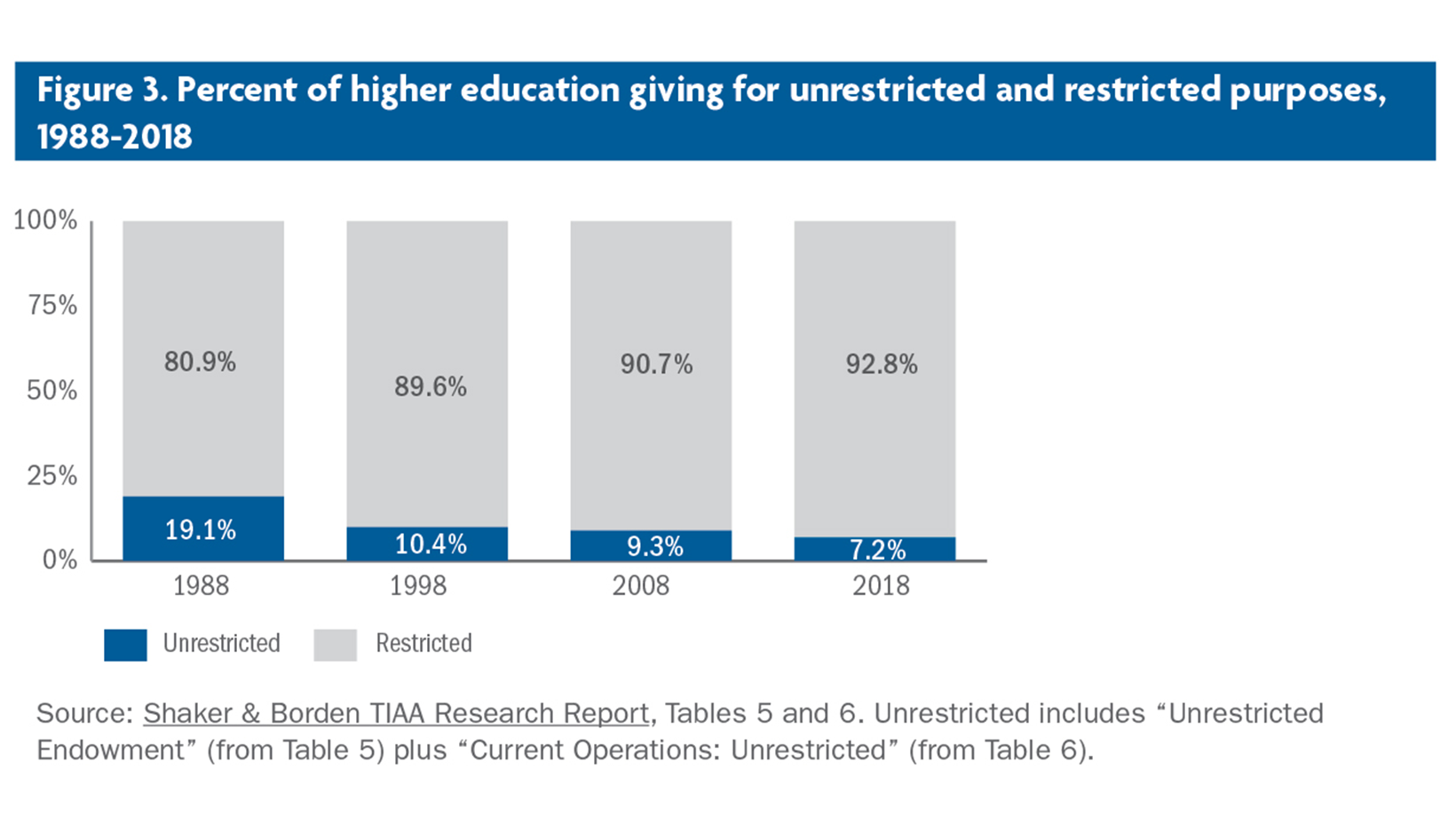Raising money requires ongoing fundraising investments, in good times and bad.
Three key questions for higher education philanthropy in 2020 and beyond
Donors gave $49.6 billion to U.S. colleges and universities in FY 2018-2019, according to the Voluntary Support of EducationOpens in a new window (VSE) survey. This marked a 6.1% increase over the prior year, the highest amount ever documented, and the 10th consecutive year of growth.
In 2020, colleges and universities—including their development offices—are facing a period unlike any other. Simultaneous shocks include the COVID-19 pandemic, the associated economic crisis, and sustained protests and calls to address social justice and racial equity, all on top of pre-existing financial problems and political polarization. The converging crises have revealed the depth of many students’ vulnerabilities, particularly first generation students and those from underrepresented communities.
In this time of uncertainty, advancement teamsOpens pdf are rightly concerned about raising the funds institutions need. Historical data may provide helpful insights for institutional leaders. This essay addresses three key questions using that approach.
What happens to educational giving in economic downtowns?
Average giving to education decreases significantly during recessions, as shown in Figure 1 below.
In times of economic growth, educational causes receive a larger percentage increase in philanthropic support than averaged by other causes. The reverse is true during recessions, when giving to education declines more quickly than for charities overallOpens in a new window. Following downturns, however, educational giving grows faster and recovers more quickly than total giving.
Raising money requires ongoing fundraising investments, in good times and bad. In the face of difficult choices driven by the pandemic, if an institution decreases these investments, its fundraising outcomes will almost certainly be negatively impacted.

Note: Includes giving to K-12, higher-education, and other educational organizations such as libraries. Source: Giving USA, shown in 2019 dollars
Is financial aid for college students a philanthropic priority?
The proportion of gifts directed toward institutional-level student financial aid was relatively flat over the last fifteen years, topping out near 13% in 2018, as shown in Figure 2 below.
These days, signs are promising for philanthropic support of student financial aid. A number of foundations see student financial aid as a central concern, and the largest foundation funders to higher education have been prioritizing economically disadvantaged students. Major foundationsOpens in a new window, companiesOpens in a new window, and philanthropistsOpens in a new window are also increasingly emphasizing funding for social justice and racial equity.
Higher education leaders could build on these high-profile interests to raise more money for the students who need it most.

Source: CASE AMAtlas Data Miner, based on the 358 higher education institutions that reported data for all four time-points
Do higher education donors give “where the need is greatest”?
More than ever before, contemporary donors are likely to restrict their gifts rather than leave them unrestricted for institutional allocation. Today some 93% of dollars donated to higher education are locked in for specific uses, as shown in Figure 3 below. This is among the findings from our 30-year analysis of a large subset of VSE institutions.
Possible causes of the shift include declining levels of public confidence and changing fundraising approaches.
Right now, institutions and their students could benefit greatly from additional, flexible philanthropic resources, and donors may be more accommodating in the current circumstances. Institutions may wish to inspire unrestricted support by communicating how funds will be used for pressing needs.

Source: Shaker & Borden TIAA Research Report, tables 5 & 6
Today’s uncertain environment means that future trends are hard to predict and fundamental changes in giving may be on the horizon. That said, decades of data and experience could help institutions to be strategic in their philanthropic planning, and to adjust fundraising approaches to focus on their most critical mission-centered opportunities and concerns.
Author

IUPUI Lilly Family School of Philanthropy
